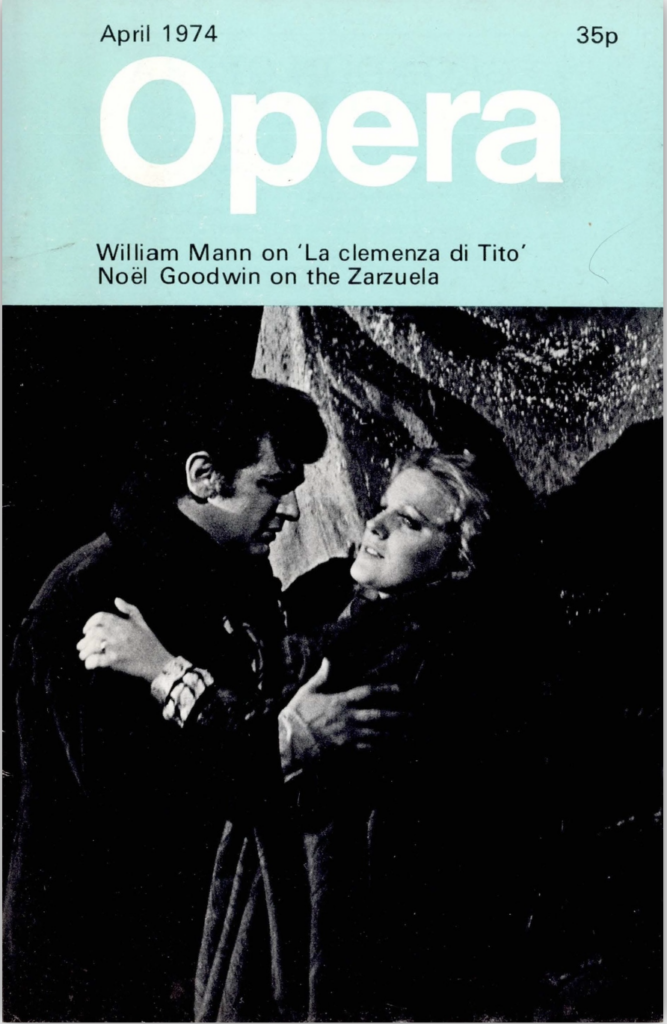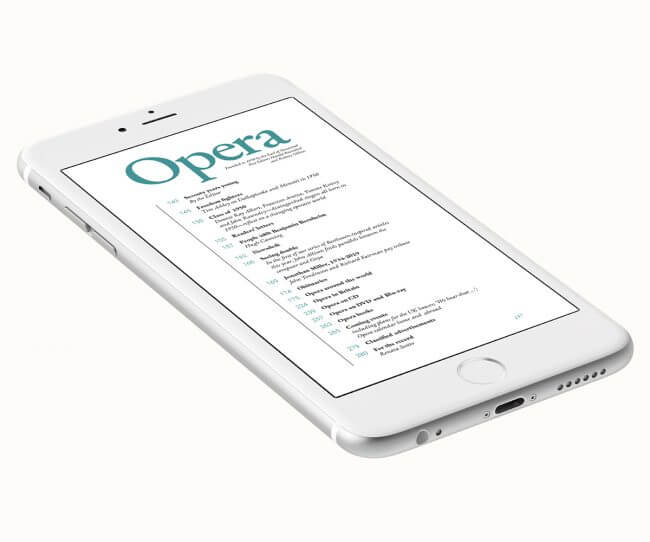Guilty Pleasure
May 2015 in Articles
From almost the time Il barbiere di Siviglia first appeared in Rome in 1816, composers have been tempted to write an opera that would continue the story begun by Rossini\’s classic work and continued by Mozart\’s Le nozze di Figaro. Indeed, many have succeeded in doing so, resulting in numerous possibilities for completing an operatic trilogy based on Pierre-Augustin Caron de Beaumarchais\’s Figaro plays. Some of these operas are actually quite good, and at least two of them have been performed with success in recent years: John Corigliano\’s The Ghosts of Versailles, seen first at the Metropolitan Opera in 1991 and in numerous revivals, and Mercadante\’s I due Figaro from 1826, which received its first modern performance at the Salzburg Whitsun Festival in 2011, conducted by Riccardo Muti.
Of course, it would need a miracle for an opera to come along worthy of taking its place as the fully-fledged equal of Barber and Figaro, yet it is surprising that there have not been more attempts to produce integral stagings of these two operas together with a carefully chosen third, with consistent sets and singers. The problem of finding a successor to the two classic works, however, is not unlike that experienced by Beaumarchais himself, who only late in life got around to writing his third Figaro play, La Mère coupable,after other playwrights had written Figaro plays of their own.
Easily the weakest of the three plays, La Mère coupable (‘The Guilty Mother\’) suffers from an abundance of action to little purpose and a lack of psychological depth. It is small wonder that most composers of Figaro sequels have produced works that either ignore Mère coupable (I due Figaro)or merely borrow details (The Ghosts of Versailles)and that, in each case, have librettos that essentially strike out on their own. Although its plot goes off in fanciful directions, The Ghosts of Versailles does include the three new principal characters introduced by Mère coupable, which picks up a generation after Figaro leaves off: Léon, the Countess\’s son by Cherubino (who does not appear in Mère coupable, having been killed in battle); Florestine, an illegitimate daughter of the Count; and Begearss, an Irishman who schemes against the Count in the manner of a Tartuffe. (The play\’s subtitle is The Other Tartuffe.)
Darius Milhaud is by far the best known of the few composers who remained faithful to Beaumarchais and made an opera out of Mère coupable. In his case, the project was suggested by Guido Valcarenghi, the head of Ricordi (which in due course published a vocal score). Milhaud, perhaps impulsively, agreed to the idea, but was aware of the play\’s defects. He called it ‘an endless play in five acts, with a lot of repetition\’, adding, perhaps as a bit of wishful thinking, ‘But bad plays often make good librettos\’. His wife, Madeleine, who had written the librettos for two other of his operas, prepared the French-language libretto essentially by condensing Beaumarchais\’s play. The resulting work, also called La Mère coupable,received its premiere at the Grand Théâtre in Geneva in 1966 with a cast that included Phyllis Curtin as the Countess and Louis Quilico as the Count; Serge Baudo conducted. It was not a success. The Milhaud scholar Jeremy Drake has called La Mère coupable the ‘one real operatic failure\’ of Milhaud\’s career, which included 15 other operas. Drake describes it as ‘full of bustle and commotion and very little inspiration\’.
Although the New York Times published a favourable report of the premiere, the opera\’s scant performing history means that there is little received wisdom otherwise about its merits or lack thereof. Accordingly, when he commissioned me to write this article the Editor had the idea of seeking out the opinion of the composer William Bolcom, who was once a student of Milhaud\’s and remains a champion of his work. ‘When he was good, he was very, very good,\’ Bolcom said of Milhaud\’s music, talking by phone from his home in Ann Arbor, Michigan, ‘and when he was bad, he wasn\’t all that bad.\’ Recently, Bolcom was the force behind a concert performance of Milhaud\’s L\’Orestie d\’Eschyle, a grand work-part opera, part incidental music-written in conjunction with Milhaud\’s frequent collaborator, Paul Claudel. The performance, given at the University of Michigan, where Bolcom taught for 35 years, was issued on disc by Naxos and received a Grammy nomination (see January 2015, pp. 106-7). ‘Milhaud considered it his magnum opus,\’ said Bolcom. ‘The last 20 minutes will knock your socks off.\’
Bolcom first came into contact with Milhaud in 1957 as a student at Aspen during the summer before his senior year at the University of Washington. At the time Milhaud was on the faculty of Mills College in Oakland, California, where he had taught since his arrival in the United States. Milhaud, who was Jewish, emigrated to the United States after the fall of France in 1940 and, in fact, received the offer to teach at Mills by telegram during the ocean voyage. The favourable impression Bolcom formed of Milhaud at Aspen proved decisive in Bolcom\’s choice of graduate schools. It was either Yale, where he would study with Hindemith, or Mills-and Mills won out. ‘I liked Milhaud personally and felt he liked me; I didn\’t know Hindemith and had heard he was tyrannical as a teacher. Milhaud was probably a little wilder, less predictable.\’ The choice proved especially fortunate, Bolcom said, because, unbeknown to him, Hindemith had already left Yale and returned to Germany.
Bolcom says that as a teacher Milhaud was ‘open to any aesthetic and wanted people to be exposed to everything\’. He commented further in a 1977 article in Musical Newsletter, ‘Reminiscences of Darius Milhaud\’: ‘To me, the proof that Milhaud was a good teacher was that I could shed his advice as often as I took it.\’ The emphasis was on ‘how the sound was manipulated, how the instrumental colours came out, the use of rhythm and tessitura. When we studied a work, we emerged with a greater sense of the grand design of the piece than of the welter of detail recent musical analysis has concentrated on.\’ After the war, Milhaud returned to France as a professor at the Paris Conservatoire, spending alternate academic years there and at Mills. In 1959 Milhaud opened new horizons to Bolcom by inviting him to Paris, where he continued his education as a student at the Conservatoire for two years. Bolcom remained in touch with Milhaud for the remainder of the latter\’s life.
The idea of eliciting Bolcom\’s thoughts on Mère coupable initially appeared to have one significant drawback: he didn\’t know a note of it. But out of curiosity and a gracious desire to oblige, he obtained the vocal score and the only available recording-a private one of the premiere, in poor sound and with gaps-and familiarized himself with it. ‘Yes,\’ he says, ‘it is very talky and uniform in texture\’; but there is a positive side to that. ‘It\’s fun to look at it as a piece for the stage. It moves around like a chatty play, like something by Noël Coward. It reaches climaxes and moves right on. The downside is that it never stops long enough for you to savour. The first act is the strongest, but the others could be better than I think. Overall, it shows good theatrical sense and the prosody is terrific. Madeleine, who had a very dry sense of humour, did an excellent job of putting the libretto together.\’
Bolcom agrees that the plot is difficult to follow, not least as regards the relationship between the young lovers Léon and Florestine. At first, in the belief that Léon is the son of the Count and the Countess and that Florestine is an adopted orphan, the two hope to marry. Then Begearss reveals that Florestine is the Count\’s daughter (which would make the couple half-siblings) and obtains the Count\’s permission to marry her himself. Finally, it becomes known that Cherubino, and not the Count, was Léon\’s father, so that the couple do not have the same father after all. This not only means that they can marry, but it sets the stage for a Figaro-like forgiveness scene. This time, however, the forgiveness is for mutual transgressions, which helps to explain the title. Beaumarchais could have called his play The Guilty Couple, but presumably everyone assumed the Count would continue his philandering. ‘His name, Almaviva-lively soul-pretty much tells you he\’s a womanizer,\’ says Bolcom. In contrast, the Countess\’s extramarital fling, which she came to regret, was something new and, therefore, worthy of supplying the title. In a subplot, Begearss schemes to cheat the Count financially but is thwarted by Figaro.
As for the music, Bolcom concurs in the view that there is a lack of variety. ‘Open any page and the music will be very much the same. Milhaud\’s opera David has a lot more variety and even includes, just for his own amusement, a tone row he derived from the Commendatore\’s music in the final scene of Don Giovanni. But there is something wearing about Milhaud\’s music from the 1960s-he was in a lot of pain when he wrote the opera.\’ (Milhaud suffered from rheumatoid arthritis for most of his adult life.) ‘But he kept on writing right up until he died-over 400 opus numbers. He used to joke about being lazy because he was old by the time he\’d written as much as Mozart and Schubert. There is something very 18th-century about Milhaud\’s music, the kind of balance of music and text that you find in Mozart.\’
Bolcom also comments on the many short arias embedded in the score. ‘They\’re definitely there, but I wish they were more clearly defined. So many composers think they need to write continuously, but it\’s hard to write that way.\’ Listeners may also find Milhaud\’s harmonic vocabulary challenging, but polytonality was apparently in his bones. Bolcom says that as a conservatory student, Milhaud was ‘thrown out of his harmony class because he kept screwing around with polytonality. He just couldn\’t handle doing exercises straight.
‘Milhaud was truly French when people thought German music was greater than French,\’ says Bolcom, but his Frenchness didn\’t prevent Milhaud from being criticized by Boulez. ‘Boulez knocked everybody. He said he wanted to blow up opera houses but a few years later he was conducting at Bayreuth.\’ Similarly, ‘Robert Craft forbade Stravinsky from seeing Milhaud because he wasn\’t a 12-tonist, but Stravinsky would sneak out to see him anyway. Milhaud introduced me to Boulez, who has always treated me nicely. Boulez was critical of Milhaud\’s music but respected him as a man. As for me, I never really heard a bad piece by Milhaud.\’









